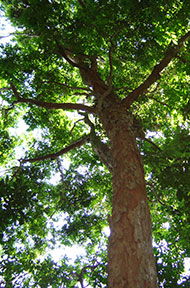Written by Andy Fein, luthier at Fein Violins
and Angie Newgren
The 18th century was a period of great productivity in the arts and commerce. Many changes were going on: World trade, the French Revolution, the end of the Baroque period and the beginning of the Classical period (circa 1750). For string players, luthiers and bow makers, the advance in playing techniques demanded better and different equipment. Bows underwent a profound change, from the Baroque bow, which was the standard, to the "modern" bow, which we now use.
Up until the middle of the 18th century, bows were more of an accessory for a violin instead of an integral part of the instrument's sound. Bow makers were continuously experimenting with different techniques and materials, but they never went too far out of the "guidelines" that were documented for bow making.
The baroque style bow was usually made of snake-wood (a stiffer and denser wood) rather than the modern bow which uses pernambuco (
Pernambuco Blog). Baroque bows were shaped into a convex curve, which is the opposite of how today's bows are shaped. The bow was arched more extremely, looking more like the bow from a bow-and-arrow. The hair on the bow was bundled, and only half the amount we use today was put on a baroque bow. Lastly, the length of the hair was only about three-quarters of the length of our modern bows.








